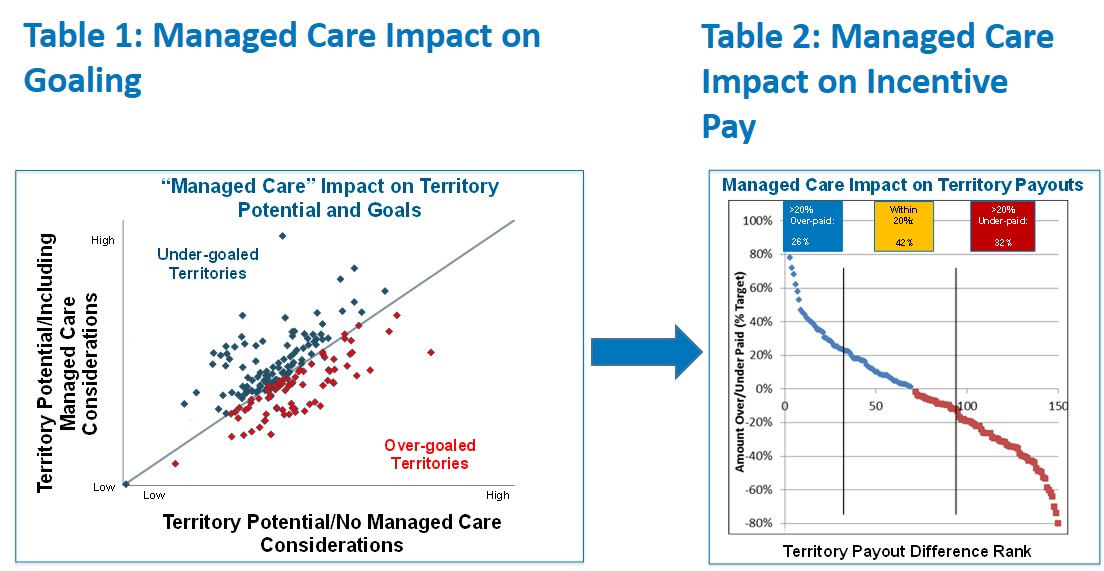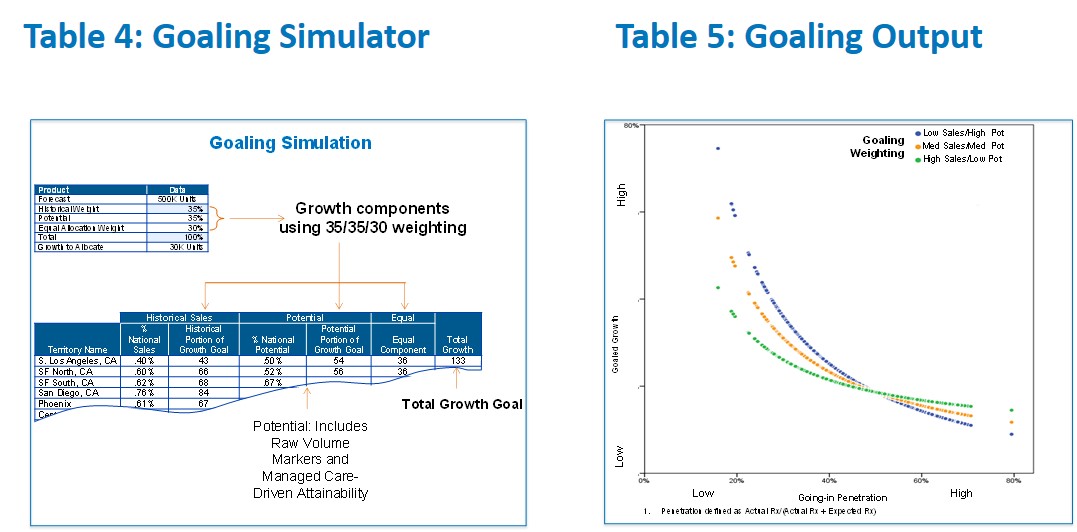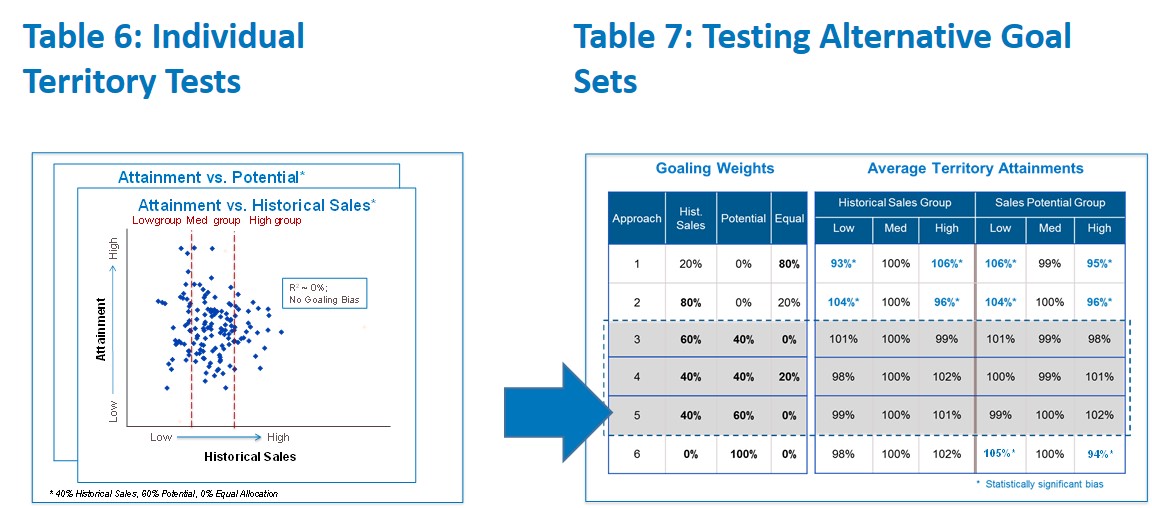Setting Sales Goals For Your Pharma Reps
Developing equitable sales goals for pharmaceutical sales is not an easy task. However, it is critical to paying sales people effectively. Even the best designed incentive compensation plans can go terribly wrong if goal setting is inaccurate. Poorly set goals can lead to undeserved, unsustainable payouts on one hand, and costly turnover on the other. Frequently the problem is made worse as both scenarios are likely to happen at the same time. Our annual surveys with pharma and biotech companies confirm that effective goaling remains a top concern for sales leaders. Many pharma companies are poised to begin to address this concern using the same data sources and logic applied to physician targeting, territory design and call planning systems. Unfortunately, the same level of analysis is not often performed when establishing goals for incentive compensation.
This article addresses two basic questions on this topic:
- What is the potential impact on rep pay from poor goal setting?
- How can you effectively set goals for pharma sales reps?
1. What is the potential impact on rep pay from poor goal setting?
The short answer is “a lot.” Potential estimates that do not incorporate such factors as Managed Care or Payer/Provider impact can significantly misstate true, attainable potential. The resulting flawed goals will advantage some territories and disadvantage others, significantly affecting incentive pay, even though underlying performance remains constant. Table 1 below shows potential analysis for a recent pharmaceutical client, illustrating how Managed Care alone can influence potential and, therefore, goaling. Table 2 illustrates how this factor affects rep payouts.
The negative effects, including unwanted turnover, can be severe and long-lasting.
2. How can you effectively set goals for pharma sales reps?
Or said another way, how can you assign “same stretch” goals for all sales people? The best practice approach entails developing an “Attainable Potential” model that incorporates both raw volume opportunity and Managed Care position for each physician, rolled up to the territory level. Explicit consideration of geographical differences in Payer (or payer/provider) position builds practical growth opportunity directly into the goaling process, thus leveling the playing field for all sales people. Table 3 below illustrates the differences in Managed Care influence by geographic region.
The following three steps summarize the approach to develop “Same Stretch” rep goals.
Step 1: Develop the Attainable Potential Model.
Start by creating an objective, statistical model at the physician level that incorporates four critical components:
- Total brand and category Rx
- The specific prescriber product mix
- Additional factors that relate to propensity to prescribe a specific brand, such as historical prescribing of high-strength products, fixed combo drugs and pace of adoption
- Physician-level Managed Care, or Payer/Provider position
Step 2: Establish Initial Goal Sets Using An Interactive Goaling Simulator.
Develop several goal sets applying different weights to historical sales vs. attainable potential to allocate the growth budget across each territory. Each set of goals is worthy of consideration because territories that have under-penetrated their potential will be given growth goals that are higher than territories with higher penetration of attainable potential. The simulator and typical output are illustrated below.
Step 3: Apply Fairness Tests.
Output from prior steps generates goals worthy of consideration. It is also important to conduct empirical fairness tests. To do so, evaluate attainment that would have occurred for each goal set against all territories individually, and then look at groups of territories with similar attributes. For goaling to be equitable, no patterns of high or low attainment can be observed, as depicted below.
Summary
Goaling can be the most difficult and also the most crucial aspect of incentive compensation. Errors can dampen sales organization morale, drive unwanted turnover and reduce productivity. They can also increase costs.
The same analytical rigor that is applied to targeting must also be applied to goaling, and the same physician-potential models can be used for both. This improves the efficiency and increases the value of sales analytics, while also ensuring that goaling is aligned with upstream sales strategy.
Originally published by: Steve Mermey

Speak With Our Experts
How do you approach goaling today for your pharmaceutical sales reps? Do you take into account Managed Care influence? Learn more about best practice goaling for Pharmaceutical Sales.




